To London to March, under an empty, feverish sky … June into July 2024.
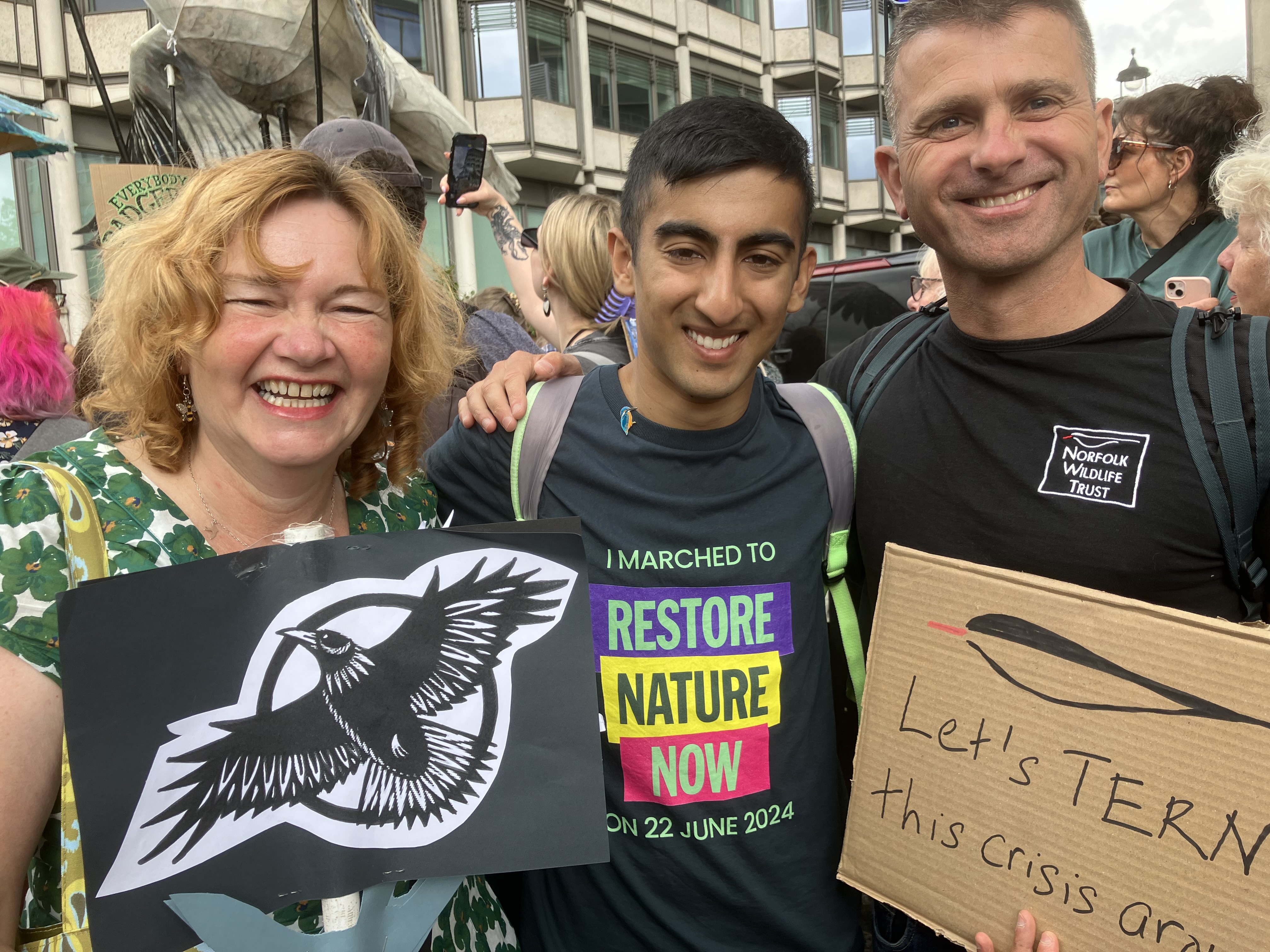
On Saturday June the 22nd, around 80,000-100,00 people responded to Chris Packham’s and Megan McCubbin’s clarion call to Restore Nature Now – and marched through London, from Park Lane to a rallying point in Parliament Square. I was able to make it up with my dear friend Sarah. The gathering pulled together an extraordinary blend of traditional and radical organisations, major nature charities and direct action groups, from The National Trust, Wildlife Trusts and the RSPB, families and the Red Rebels, Right to Roam to Just Stop Oil, Extinction Rebellion and the Climate Justice Movement. The urgency and awareness now to connect all these different threads, and demand immediate political change and action for nature, people and the climate, compelled everyone to march as one.

There was also an undeniable and profound feeling that each and every one of us carried the will and spirits of those that couldn’t make it to the march with them; their voices swelling the united ranks in love and rage, too.
There was no trouble. The march was well organised and it was a bright, colourful and joyful spectacle – who can argue with an outsized avocet, sweeping its bill across the crowd? A balloon-bellied blue tit? A little lad dressed as Robin Hood? The banners, papier-mâché models, flags and kites of badgers, dormice, marsh fritillary butterflies, ladybirds, salmon, plants, trees, pirates with toxic tuna and the endlessly funny blue tit puns drew only smiles, waves and cheers. It felt more carnival than protest at times. But then, bump into anyone you knew, listen to a speech, a chant, read a banner, listen to a child begin a ‘Save the Bees, Save the Trees’ chant and hear it taken up into a roar that travelled down the rippled streets of people and sooner or later you’d either be in tears, or squeezing the shoulder of someone else that was.
These are desperate times: for nature, a climate that can sustain us, and for people in all kinds of unimaginable peril.
The speeches at Parliament Square, hosted by Chris and Megan, were rousing, moving, and funny at times, and from a growing diversity of people – something to mark and celebrate in itself, given that, for so long, many of these organisations, members, access to nature and awareness have very much not been diverse. The leisurely and repeated fly-over from three of Westminster’s peregrine falcons was glorious approval. Nature doesn’t have a voice, but we do.
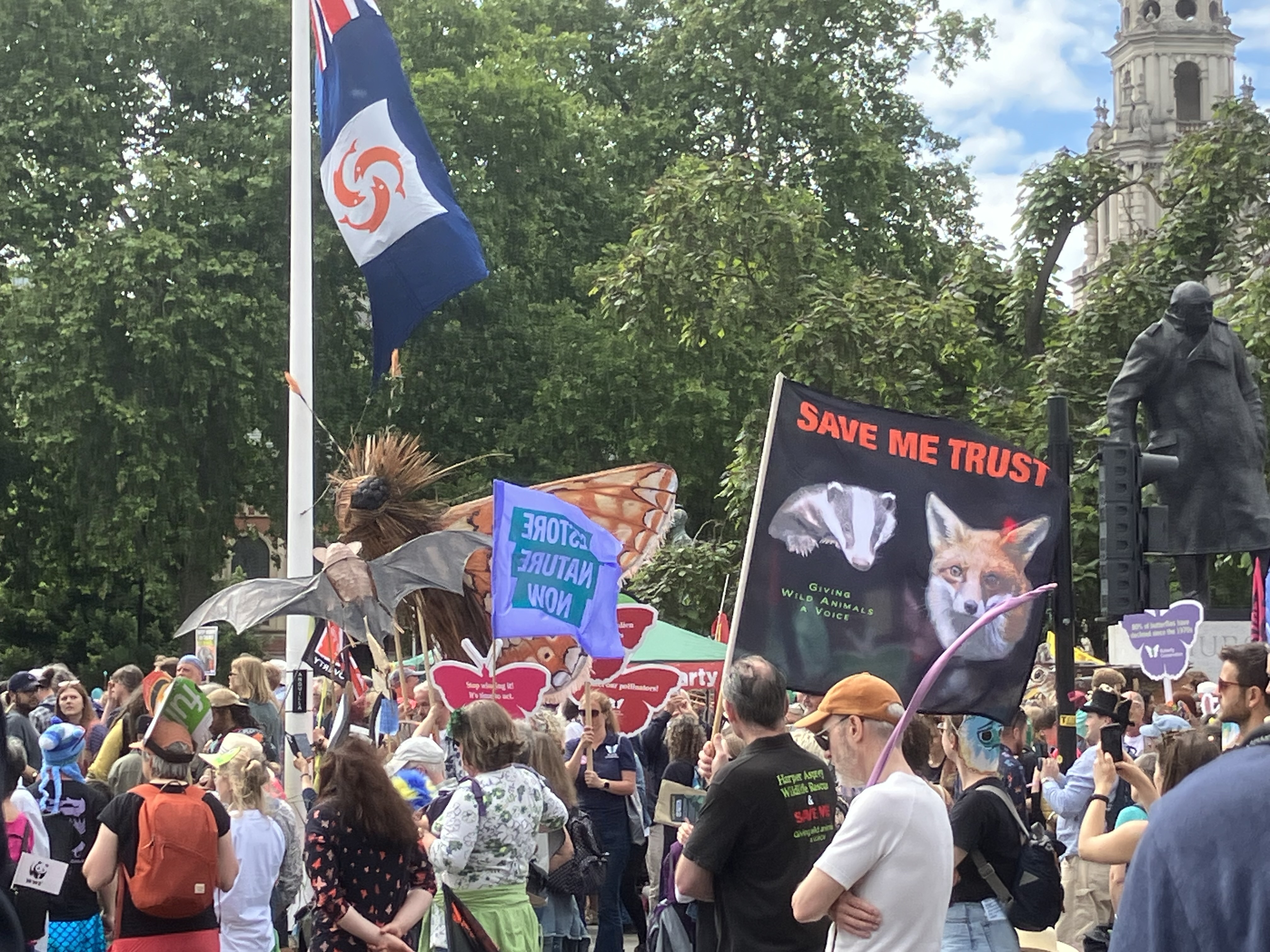
Yet, just days after Just Stop Oil threw coloured cornflour over Stonehenge and made the headlines, those tens of thousands marching through the London streets were not mentioned by the BBC, or indeed, many news outlets at all. It makes you wonder what you’ve got to do to be heard – or, rather, it reinforces what you need to do to be heard, especially when Government ignores its own scientific advisors about the perilous, knife-edge urgency of the joint nature and climate catastrophe unfolding.
But the coming together will keep working. We know we are many. We know we have much in common, particularly a strength of love for the glittering diversity and interconnectedness of the natural world (that includes humanity) and the disabuse of it that affects our global communities, our wild neighbours, the air we breathe, our food, water, the ground we stand on. This, and the next generation.
On returning to the warm lit house that evening, in our very rural village, there was not a moth indoors. The following day, the skies were hot, blue, silent and all but empty: feverish.
Because the wet, climate-changey winter yet again washed away the seeds of a soil-enhancing cover crop in the field behind our house (a crop that also benefits bees, other insects and birds) the thistles, docks and bare patches left, were sprayed off with the herbicide Glyphosate this spring, before being replanted. It’s just beginning to emerge now. The neighbouring horse field was given the same Glyphosate treatment, and also deep ploughed, as the grazing had ‘got tired’ and there were too many buttercups, docks, thistles and nettles for it to be good pasture. This is routine pasture management, and the way both fields are prepped for a new crop. But what it means is that all the spring’s insects went with it, all around us. All of them; the beetles, butterflies and moths, hoverflies and so on. The herbicide literally wipes out their home and food. It is a pattern repeated again and again. But let me be clear, I am not blaming farmers here. This is what ‘we’ do. This is what most of us accept as routine, when we buy our food (for grazing horses, read grazing animals) and it has to change. We have to change and we have to change the system. There are other things we can try to change on a community level though of course, albeit with mixed results.
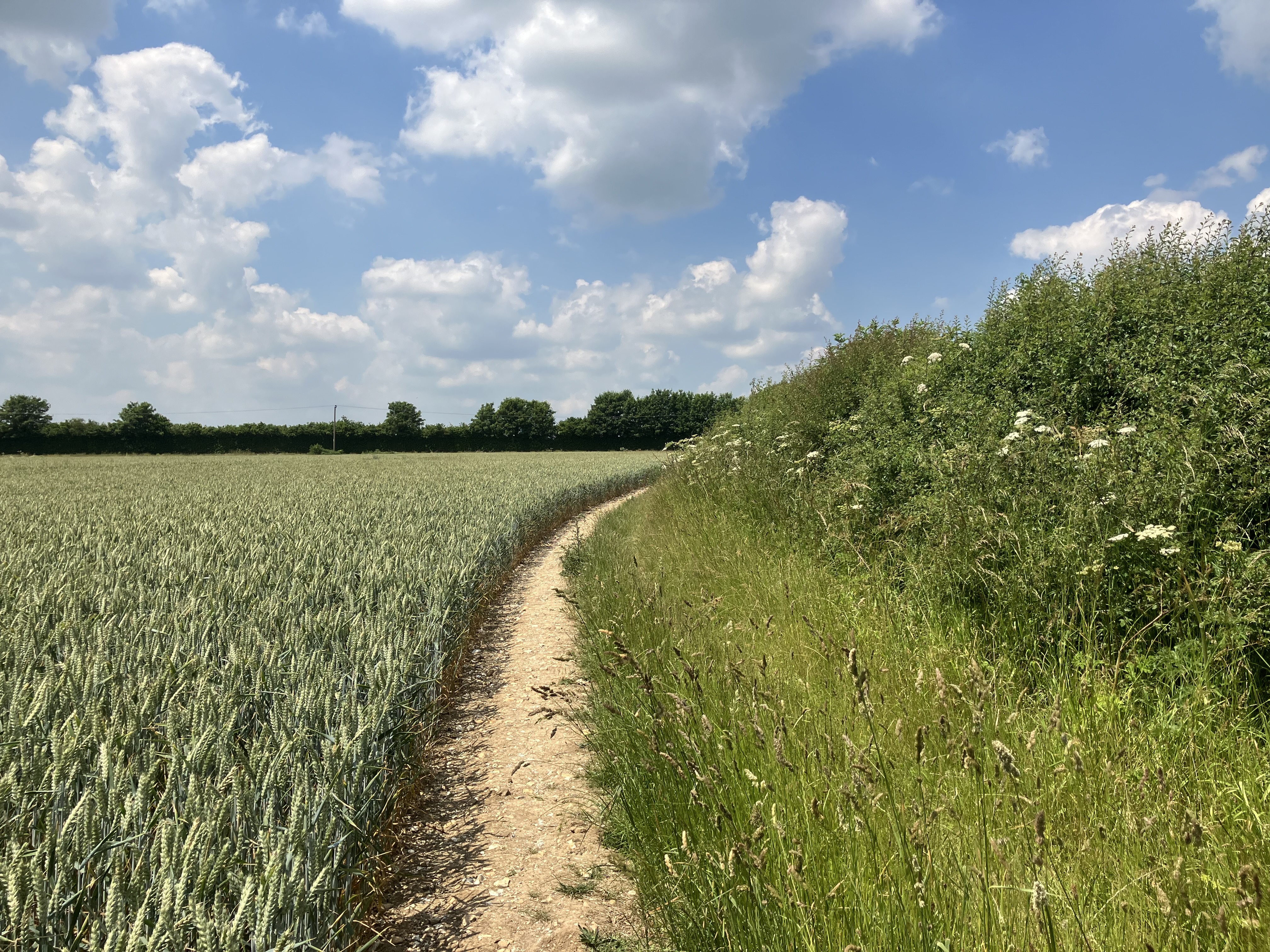
Just before the weekend’s march, a small, remaining, long-grassy meadow, with a few remnant wildflower species in it – orchids, betony, centaury, yellow rattle – was mown. Not for hay that might revive those flowers, but to ‘tidy’ it, at its most richest. The sward was left on top instead, mulching and heating and rotting down. This means those lower-growing, flower-rich plants are suppressed and extinguished again, along with their attendant butterflies and insects, whilst at the same time, those taller, tougher plants that people find so untidy-looking – the nettles, docks and thistles – are encouraged; mulched in fact. The field margins have all been treated the same way.
If only they’d do it later in the year. But after two decades of my protestations, my suggestions, it still happens. I am a nuisance. An irritation. Trouble, as one of the tractor drivers, whose kids have grown up with mine, calls me, half-affectionately. A strange kind of tidiness rules, that seems to come from the 1980s, when it wasn’t yet obvious we were losing everything.
To top it all, on that Sunday afternoon, I heard the distinct sound of a hedgecutter. I thought, perhaps, someone was going to safety-trim the corners of the road, but it was a contract farmer cutting a neighbour’s hedge with a tractor and flail. Not illegal in itself, as you are allowed to cut a garden hedge whatever time of year, but there is no path to impinge upon, no safety issue, and needless to say, a tractor and flail is pretty heavy-handed in June. Of course there are birds nesting in the hedge ad of course, it is illegal to disturb them. I was assailed all afternoon by the panicked alarming of two male blackbirds. It was very hard to bear. I’ve known the farmer decades, but both he and the neighbours are unrepentant. It’s in the diary to do each June. I’ll lodge a crime report – but I have not spotted exact nests – and they simply say there weren’t any.
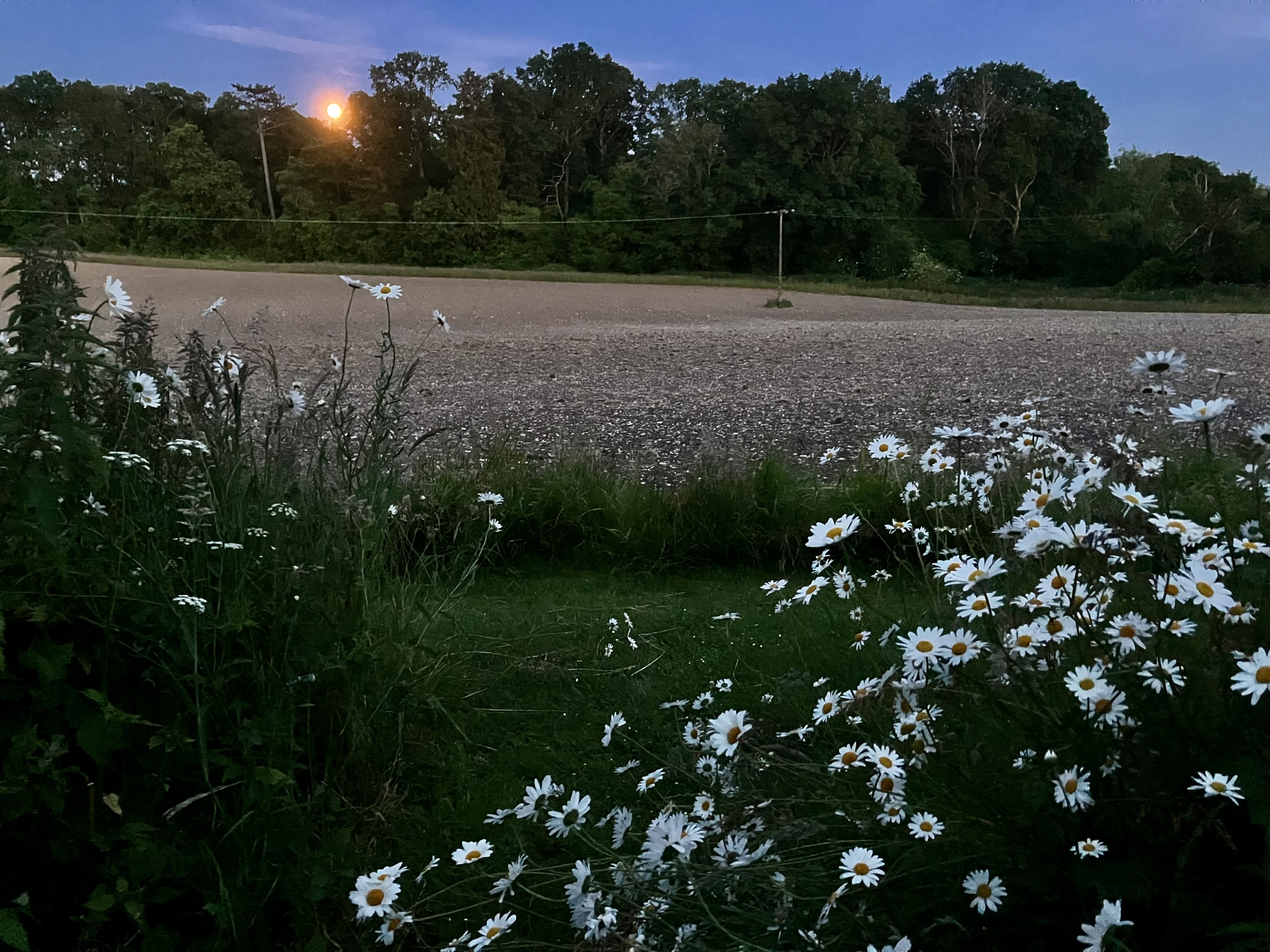
Checking the village Facebook later, someone had mentioned the village pond becoming overgrown, which it has. To stop it drying out and becoming scrub, then woodland, we need to galvanise and substantially reduce the irises taking over – leaving some for the aquatic insects and shelter. But the person that raises it recommends Round-Up. Spraying the pond with Round Up, as was done to rid it of duckweed some dozen years ago (and did for so much else). I step in, gently, kindly: let’s not do that – we need some of the irisis, and spraying them will kill the dragonflies, the tadpoles, the everything else and, we like those, don’t we? There is the pervading view that you can buy a chemical to spray on plants in water that will selectively kill only the things you want rid of, and nothing else.
My joy and positivity from the march turned to grief then anger and despair in just 24 hours. And then back again to kindness; to try challenging and engaging hearts and minds. To exposing outdated misinformation. It worked in the last case.
By Sunday afternoon, my daughter, who’d been concerned about the vanished gateway butterflies of last year (small coppers, marbled whites, gatekeepers, meadow browns, small tortoisehells) and the lack of soldier beetles and shield bugs on the hogweed (not one down our lane, not one) witnessed the first scarlet tiger moth emerging in the garden. They only exist here, because we grow a messy clump of comfrey, that also feeds the bees and hoverflies.
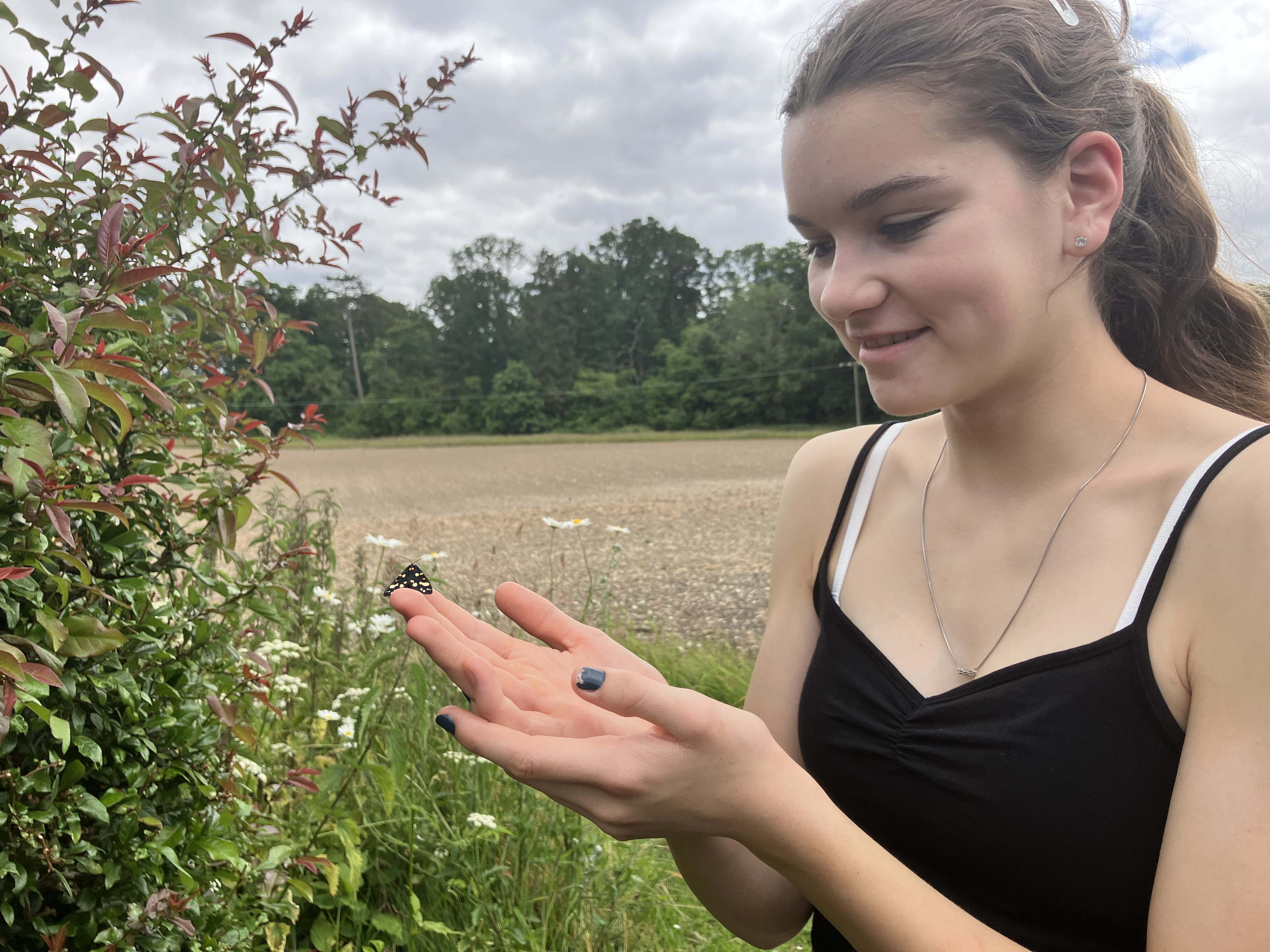
Dear lord we have work to do, not least upon ourselves. Let’s keep galvanizing, eh? Let’s keep hoping, marching, talking, acting … x
If you’d like to support my writing by ‘buying me a coffee,’ the link is here, and of course, absolutely and entirely optional, thank you!
https://ko-fi.com/nicolawriting

Articles and News …
Keeping it short this month – as that was rather a long blogpost!
My interview chat with Octavia Bright and Jessie Greengrass on The Climate Fiction Prize on Radio 4s Open Book, is here (halfway in.) https://www.bbc.co.uk/programmes/m001zmn4
My interviews for acting as a Rewild Yourself Champion are going live in July – I’ll add a link here when it does.
My latest Guardian Country Diary offerings can be found under the tab above (maybug weddings, and soon, a rite-of-passage walk home from school.) And my Countryfile Opinion Column (on The New Folklore) can be found in the latest Magazine, with a gorgeous illustration from Lynn Hatzius.
And exciting news of a new Guardian Country Diary Anthology, that I feature in – along with a wonderful cast of writers: Under the Changing Skies is out September 26, 2024 with Faber. Edited by our brilliant guide and editor, Paul Fleckney and introduced by Ian McMillan, no less! There is a link below to pre-order, with a 20% discount.
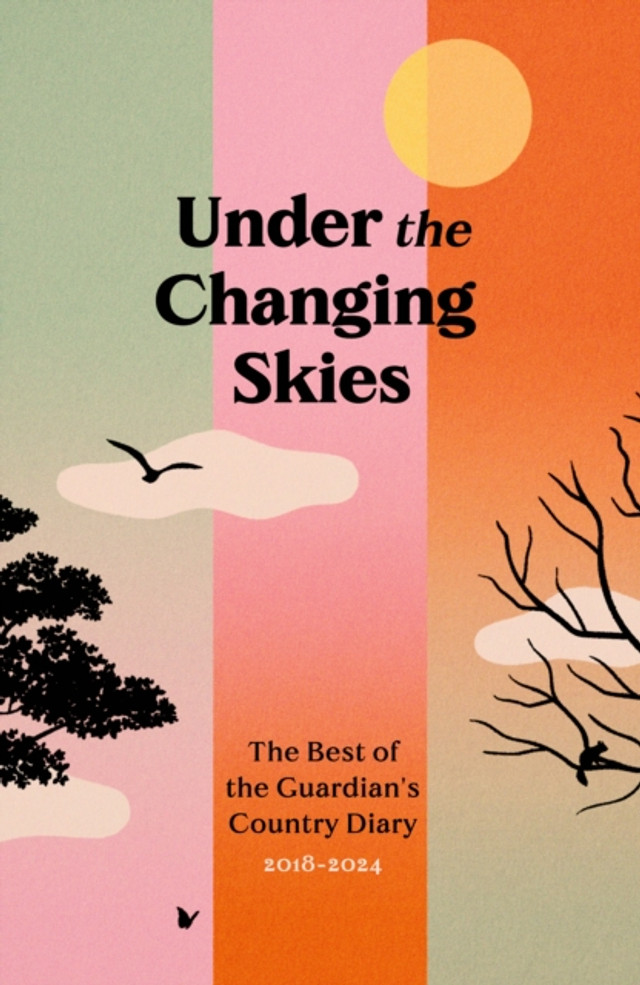
https://guardianbookshop.com/Under-the-Changing-Skies-9781783353101
Leave a comment